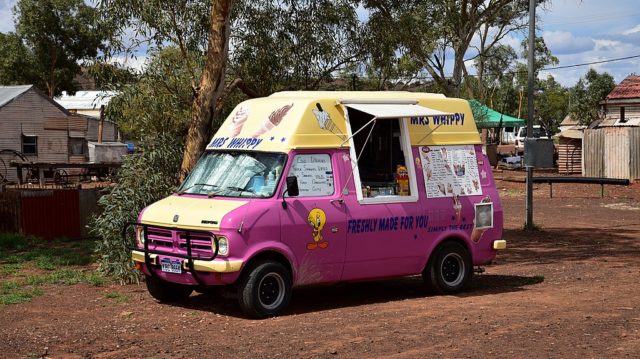In the Great Victoria Desert of Western Australia, there is a ghost town 828 kilometers (514 miles) from Perth (the capital of the state of Western Australia) called Gwalia. Initially, this settlement sprang up around the Sons of Gwalia mine, Australia’s deepest gold mine.
The Sons of Gwalia began its mining activities in 1897. The population in the area started to grow as people were drawn to work in the mine. At its peak, the maximum number of people living in the area was 1,114 people.
The Sons of Gwalia has become not only Australia’s deepest mine but also the largest gold mine in Western Australia.

It began in 1896 when Edward Sullivan explored the region in search of gold. That same year, three men named Carlson, White, and Glendinning discovered gold at the foot of Mount Leonora.
They named their claim “the Sons of Gwalia” in honor of a storekeeper called Thomas Tobias who had funded their trip. Tobias had Welsh heritage, and “Gwalia” is an ancient name for that country. The three men sold their claim to George Hall for £5,000.
Hall secured finance from the London-based firm Bewick, Moreing & Co. They sent him a young American geologist named Herbert Hoover in May 1897 – the same man who would become the 31st President of the United States.
Hoover suggested that he be appointed manager of the mine, and Hall agreed. Under Hoover’s direction, the mine grew, and so did the local population which consisted mainly of workers. In 1901, there were about 884 people in Gwalia, and by 1910 the population was 1,114 inhabitants.
However, in 1921, the population was halved due to a fire at the mine which forced the company to stop production for three years. After the partial restoration of the mine, the population grew slightly, but it never exceeded its previous record of 1,114 people.

The Sons of Gwalia underground mining operation continued until 1963. In December of that year, the mine had to be closed due to the depletion of mine resources. The population of the city declined to 40 people in less than three weeks. Over the entire life of the mine, 2,644 million ounces (82.24 tons) of gold was mined.
After Gwalia was empty of workers, the city became a popular tourist destination. In 1971, efforts began to restore and preserve the houses, buildings, and structures of the mine which remained in the city. However, some abandoned houses still stand as a testament to a bygone era.

The old administrative buildings have been turned into the Gwalia Museum, one of the most interesting places in Western Australia. Visitors to the museum can learn about life during the working history of the mine through photographs, documents, and artifacts. Displays cover both the commercial and domestic life in this settlement.
In addition to the museum, you can find such attractions as the Gwalia State Hotel (the first State Hotel in Australia), which was opened to provide an alternative to hotels in nearby Leonara. Visitors can also view the houses of miners and other administrative buildings that were left by residents in 1963.
In the 1980s, the Sons of Gwalia mine was reopened, only with new technologies and a new underground mining scheme. The operation traded on the Australian Stock Exchange, expecting to extract 1.6 million ounces of gold. The mine, in fact, produced 2.4 million ounces of gold.






Another Article From Us: Abandoned American Dream Park – in China

